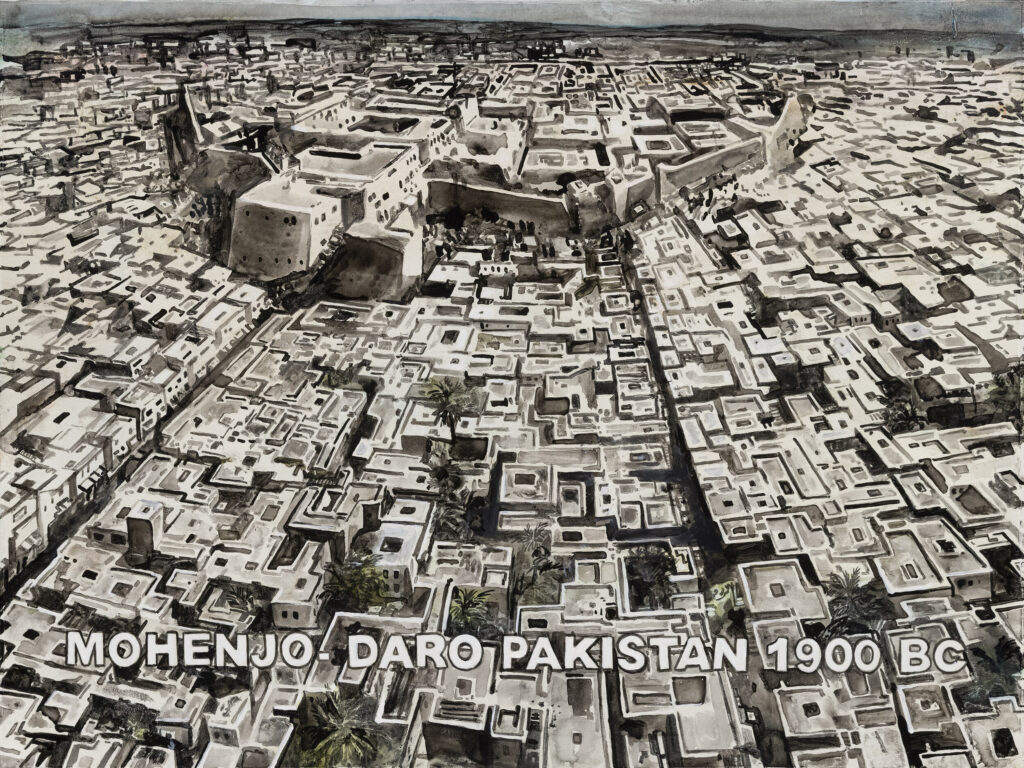Sindh, Pakistan
Abandoned 19th Century BCE

Mohenjo-daro(Sindhi: موئن جو دڙو, or Mound of the Dead Men, Urdu: موئن جو دڑو) is an archaeological site in Pakistan. It built in the 26th Century BCE and was of the largest settlements of the Indus Valley or Harappan Civilization and was one of the world’s first large cities. It was built on a rectilinear plan of fired brick, covered around 300 hectares and is estimated to have housed around 40,000 people. It was abandoned around 1900 BCE when the Indus Valley went into sudden decline. The site was discovered by R.D. Banerji, an officer of the Archelogical Society of India in 1920, leading to several excavations until 1965 when further excavations were banned in order to prevent additional damage to the site. Artifacts from the site, which had been taken to New Delhi, were divided between Pakistan and India following the Partition of India. India retained the famous bronze Dancing Girl statue of which archeologist Mortimer Wheeler wrote in 1973: ”She’s about fifteen years old I should think, not more, but she stands there with bangles all the way up her arm and nothing else on. A girl perfectly, for the moment, perfectly confident of herself and the world. There’s nothing like her, I think, in the world.” Mohenjo-daro was designated a UNESCO World Heritage Site in 1980. The site is currently threatened by groundwater salinity and lack of conservation. In 2014, the Pakistan People’s Party controversially chose to use the fragile site for the Sindh Festival inauguration ceremony despite protests from archeologists. The painting is based on an uncredited recreation of what the city looked like.
Years ago I read about Mohenjo Daro, an ancient site in Pakistan near the border with India. Built c.2,500 BCE, at its height it was one of the world’s earliest major cities, pre-dating the politically constructed borders of India today. The blood-soaked line of partition runs from Jammu/Kashmir to Gujarat, along the way cleaving Punjab (where my own family’s ancestry lies) and running near the Indus Valley, where several archaeological remains of the ancient Harappan Civilization are sited. Anon.